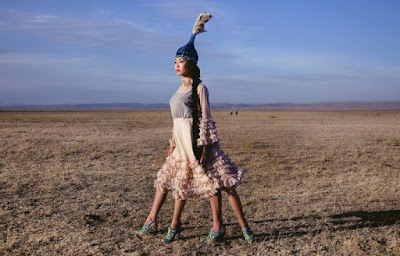State and contemporary art in Central Asia
Torsdag d. 22. marts kl. 17.30 vil postdoc Diana Kudaibergenova fra Lunds Universitet holde foredrag i Centralasiatisk Selskab om "STATE AND CONTEMPORARY ART IN CENTRAL ASIA" på Københavns Universitet Amager, Søndre Campus, KUA 2, lokale 11a.1.07, på Karen Blixens Plads 6 (trods byggerod adgang til bygningen direkte ad ramblaen fra Islands Brygge Station - man går til højre for bygningen med Fakta Q). Ring på 51164886 hvis du har problemer med at finde det. Alle er velkomne. Efter en pause, hvor vi byder på en snack og en forfriskning, afholdes ordinær generalforsamling i selskabet.
Resumé på engelsk:
Contemporary art of Central Asia is going through the renaissance since the collapse of the Soviet Union in 1991. The field of contemporary art in this region provides a wide range of genres and forms to focus on united by one idea of conceptual and socially responsible art. In its open protest, creative dissent and desire to open up the region to the wider global audiences, contemporary art of Central Asia opposes itself to the state-sponsored artists and Soviet remnants of Socialist Realism. But what is the story that contemporary artists are trying to say about their societies and why are these artists so preoccupied with their past and present, identities and traumas that their respective states are usually reluctant to talk about? In this talk Dr. Diana T. Kudaibergenova will present her latest research on socio-cultural struggles for power and identity in some of the most unexpected places from underground exhibition halls to artists' working studios. She will argue that there, in the midsts of complex art installations and late night discussions about politics, freedom, gender and dignity, lies the new civil society of united Central Asia. The talk is based on extensive fieldwork and is part of the forthcoming manuscript about contemporary art in the region




Kommentarer
Send en kommentar